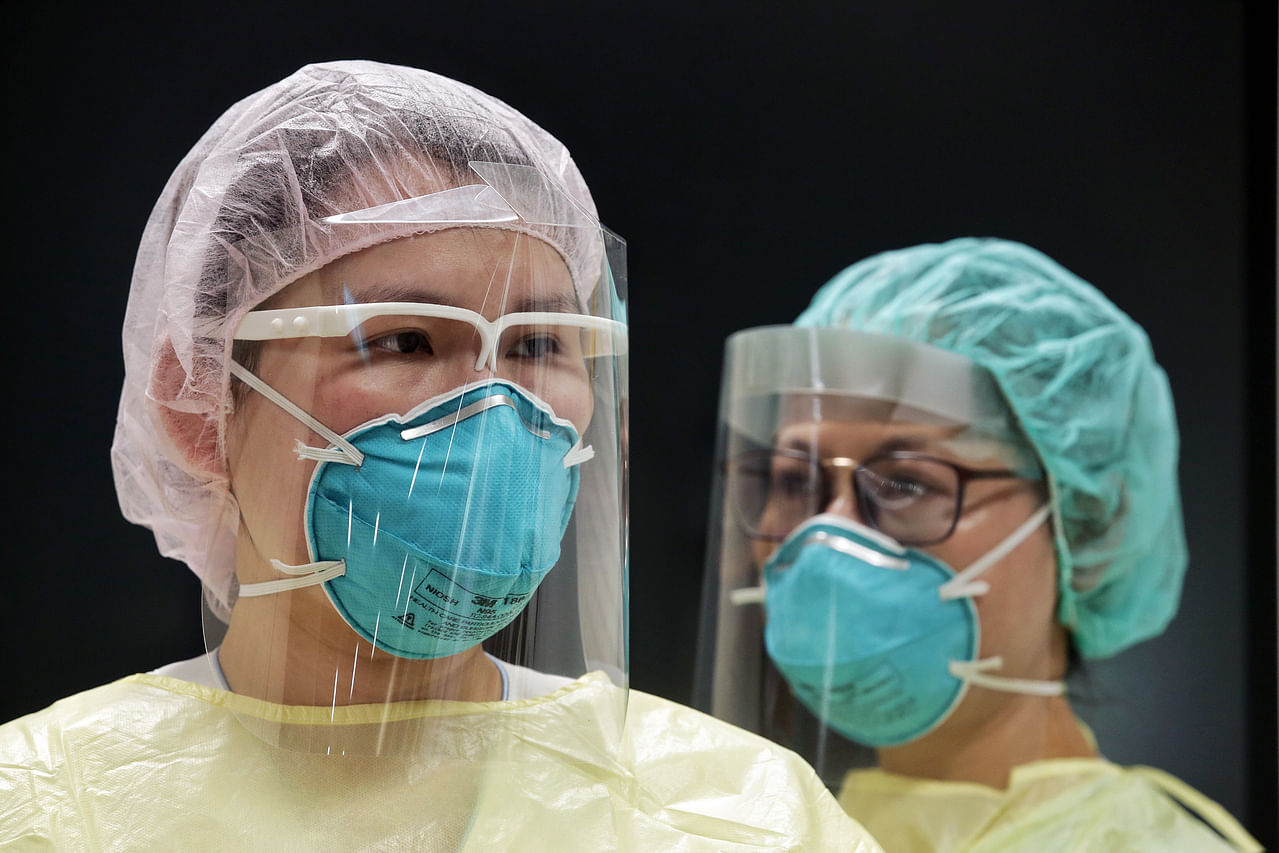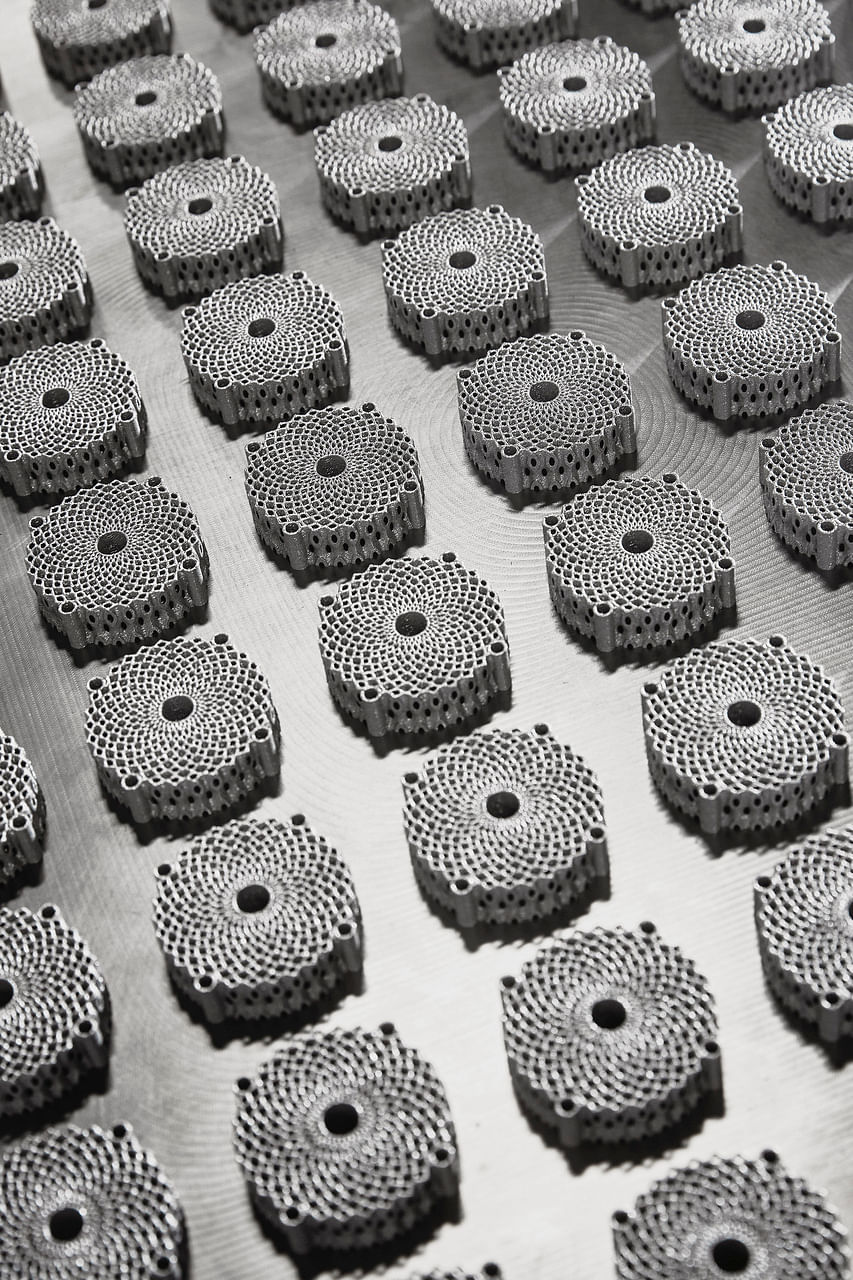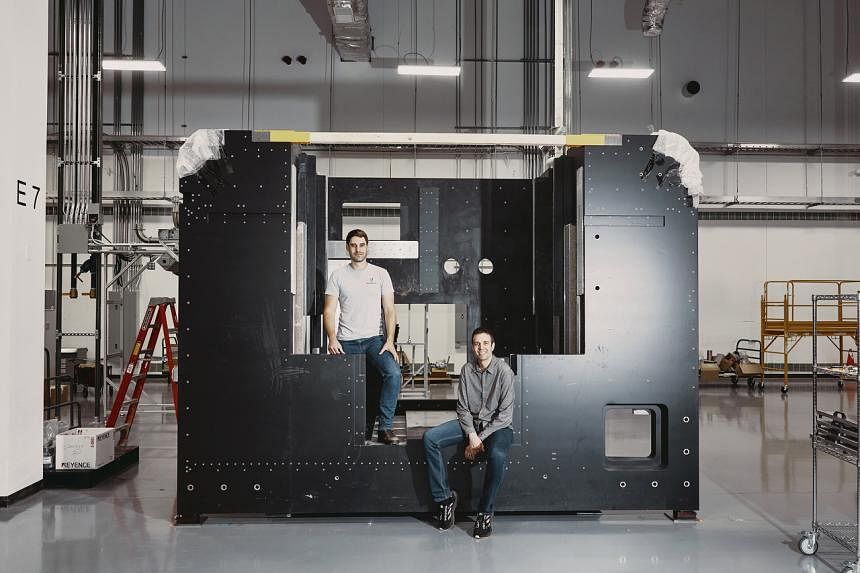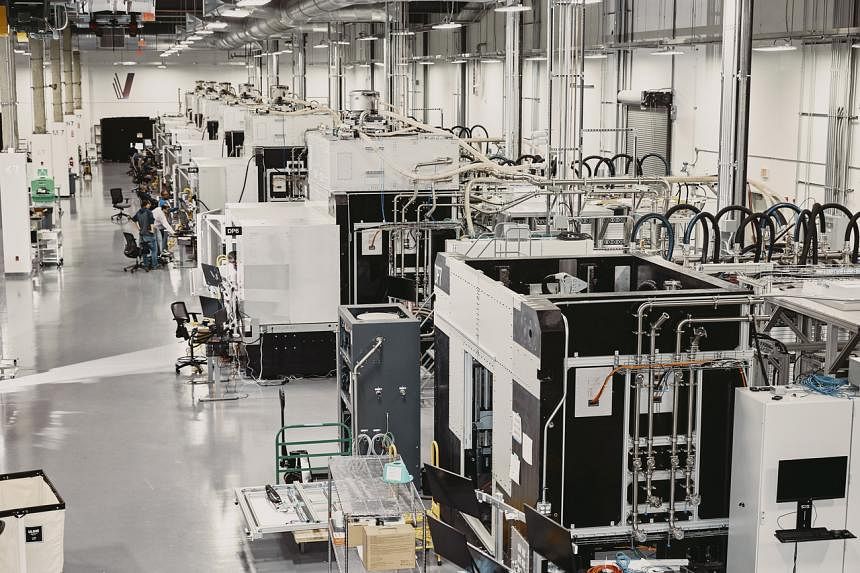DEVENS (Massachusetts) • The machines stand 6m high, weigh over 27 tonnes and represent the technological frontier of 3D printing.
Each machine deploys 150 laser beams, projected from a gantry and moving quickly back and forth, making high-tech parts for corporate customers in fields including aerospace, semiconductors, defence and medical implants.
The parts of titanium and other materials are created layer by layer, each about as thin as a human hair, up to 20,000 layers, depending on a part's design.
The machines are hermetically sealed. Inside, the atmosphere is mainly argon, the least reactive of gases, reducing the chance of impurities that cause defects in a part.
The 3D-printing foundry in Devens, Massachusetts, about 64km north-west of Boston, is owned by VulcanForms, a start-up that came out of the Massachusetts Institute of Technology (MIT).
It has raised US$355 million (S$496 million) in venture funding. And its workforce has jumped sixfold in the past year to 360, with recruits from major manufacturers like General Electric and Pratt & Whitney and tech companies including Google and Autodesk.
"We have proven the technology works," said MIT professor of mechanical engineering John Hart, who is also a co-founder of VulcanForms.
"What we have to show now is strong financials as a company and that we can manage growth."
For 3D printing, whose origins stretch back to the 1980s, the technology and economic and investment trends may finally be falling into place for the industry's commercial breakout, according to manufacturing experts, business executives and investors.
They say 3D printing, also called additive manufacturing, is no longer a novelty technology for a few consumer and industrial products, or for making prototype design concepts.
"It is now a technology that is beginning to deliver industrial-grade product quality and printing in volume," said Dr Joerg Bromberger, a manufacturing expert at McKinsey & Co.
He is the lead author of a recent report by the consulting firm titled The Mainstreaming Of Additive Manufacturing.
3D printing refers to making something from the ground up, one layer at a time. Computer-guided laser beams melt powders of metal, plastic or composite material to create the layers.
In traditional "subtractive" manufacturing, a block of metal, for example, is cast and then a part is carved down into shape with machine tools.
In recent years, some companies have used additive technology to make specialised parts.

General Electric relies on 3D printing to make fuel nozzles for jet engines, Stryker makes spinal implants and Adidas prints latticed soles for high-end running shoes. Dental implants and teeth-straightening devices are 3D- printed.
During the pandemic, 3D printers produced emergency supplies of face shields and ventilator parts.
Today, experts say, the potential is far broader than a relative handful of niche products.
The 3D printing market is expected to treble to nearly US$45 billion worldwide by 2026, according to a report by Hubs, a marketplace for manufacturing services.
The Biden administration is looking to 3D printing to help lead a resurgence of US manufacturing.
Additive technology will be one of "the foundations of modern manufacturing in the 21st century", along with robotics and artificial intelligence, said Dr Elisabeth Reynolds, special assistant to the President for manufacturing and economic development.
In May, President Joe Biden travelled to Cincinnati to announce Additive Manufacturing Forward, an initiative coordinated by the White House in collaboration with major manufacturers.
The five initial corporate members - GE Aviation, Honeywell, Siemens Energy, Raytheon and Lockheed Martin - are increasing their use of additive manufacturing and pledged to help their small and medium-sized US suppliers adopt the technology.
The voluntary commitments are intended to accelerate investment and build a broader domestic base of additive manufacturing skills.
Because 3D printing is a high-tech digital manufacturing process, administration officials say, it plays to America's strength in software. Additive manufacturing, they add, will make US manufacturing less dependent on casting and metalworking done overseas, especially in China.
It also promises an environmental bonus. It is far less wasteful than the casting, forging and cutting of traditional manufacturing.
For some metal parts, 3D printing can cut material costs by 90 per cent and reduce energy use by 50 per cent.

Industrial 3D printing, experts say, has the potential to substantially cut the total expense of making specialised parts, if the technology can be made fast and efficient enough for higher-volume production.
VulcanForms was founded in 2015 by Professor Hart and one of his graduate students Martin Feldmann.
They pursued a fresh approach for 3D printing that uses an array of many more laser beams than existing systems. It would require innovations in laser optics, sensors and software to choreograph the intricate dance of laser beams.
By 2017, they had made enough progress to think they could build a machine, but would need money to do it.
The pair, joined by Mr Anupam Ghildyal, a serial start-up veteran who had become part of the VulcanForms team, went to Silicon Valley. They secured a seed round of US$2 million from Eclipse Ventures.
The VulcanForms technology, recalled Eclipse partner Greg Reichow, was trying to address the three shortcomings of 3D printing: too slow, too expensive and too ridden with defects.
The start-up struggled to build a first machine that proved its concept workable. But it eventually succeeded. And later versions grew larger, more powerful and more precise.

Its printers, VulcanForms said, now generate 100 times the laser energy of most 3D printers, and can produce parts many times faster.
That print technology is the company's core intellectual asset, protected by dozens of patents.
But VulcanForms has decided not to sell its machines. Its strategy is to be a supplier to customers in need of custom-made parts.
That approach allows VulcanForms to control the entire manufacturing process.
But it is also a concession to the reality that the ecosystem of additive manufacturing is lacking.
The company is building each stage of the manufacturing process itself, making its own printers, designing parts, doing final machining and testing.
"We absolutely have to do it ourselves - build the full stack of digital manufacturing - if we are to succeed," said Mr Feldmann, who is the chief executive.
"The factory is the product."
The Devens facility has six of the giant printers. By next year, there should be 20, the company said.

VulcanForms has scouted four locations for a second factory.
In five years, the company hopes to have several 3D printing factories up and running.
The do-it-yourself strategy also magnifies the risk and the cost for the start-up. But the company has convinced a roster of high-profile recruits that the risk is worth it.
Mr Brent Brunell joined VulcanForms last year from General Electric, where he was an additive manufacturing expert. The concept of using large arrays of lasers in 3D printing is not new, he said, but no one had really pulled it off before.
After he joined VulcanForms and examined its technology, he said, "it was obvious these guys were on to the next architecture, and they had a process that was working".
Beside each machine in VulcanForms' facility, an operator monitors its performance with a stream of sensor data and a camera image of the laser beams at work, piped to a computer screen.
The sound of the factory is a low, electronic hum, much like a data centre. The factory itself can be a potent recruiting tool.
"I bring them here and show them the machinery," said VulcanForms' head of operations Kip Wyman.
"The usual reaction is, 'Heck, I want to be part of that.'" - NYTIMES


